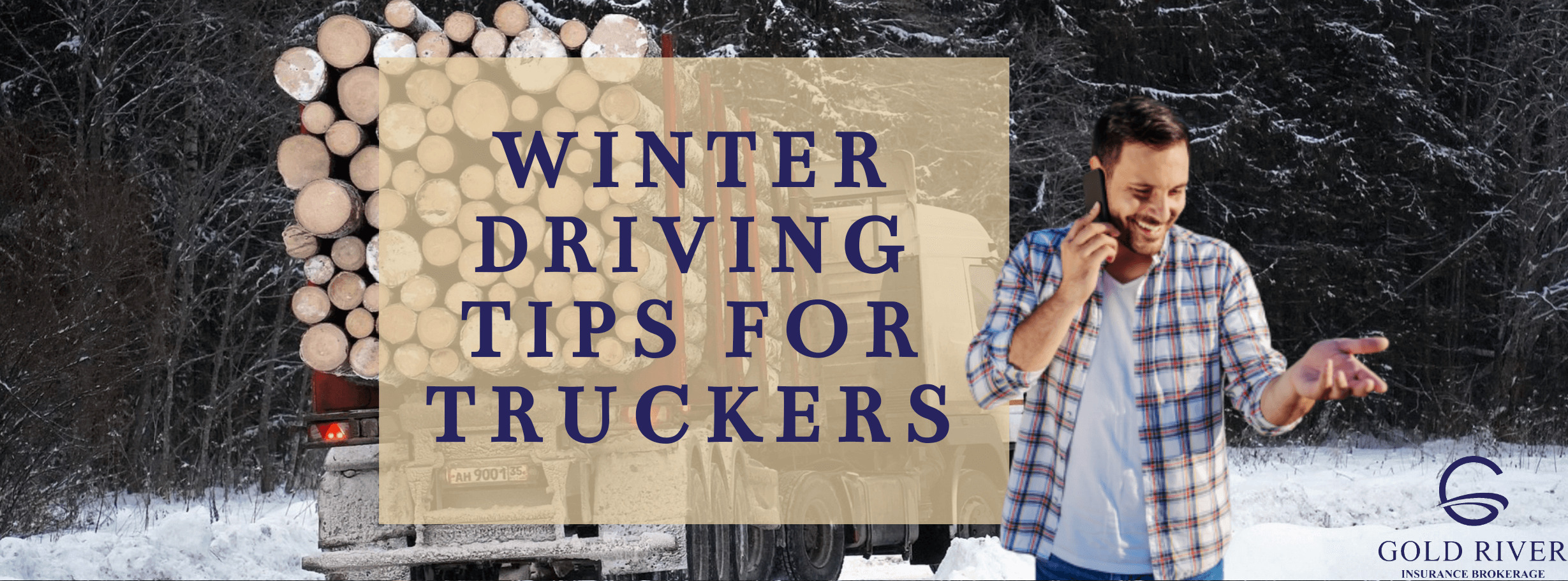
Commercial truck insurance rates are always changing and will often fluctuate depending on a number of reasons. Some insurance companies will change rates primarily based on your driving record and some will change rates because of an increase in accidents and claims from other motor carriers in your particular operation type. Most insurance companies will look at your driving record for any violations or accidents that have occurred within 3 years. So, being safe on the road will not only keep you from harm, but it will also keep your rates down. Safety is the number 1 concern! With the winter months rapidly approaching, it is important to be prepared for treacherous road conditions across much of the country, and the best thing you can do to make sure you stay safe when the temperature drops is to be ready.
 A Winter State of Mind
A Winter State of Mind
One of the joys of the trucking business is the ability to travel across the country and experience the beauty of different roads from coast to coast. However, this also means you must prepare for various types of driving conditions. The winter months make for treacherous road conditions across much of the country; the best thing you can do to make sure you stay safe when the temperature drops is to be ready.
Whether you are driving through a busy metropolis or sparsely populated country roads, there are heightened risks to be aware of in winter. You never know what may happen—be prepared for anything. In addition to having a comprehensive commercial truck insurance policy, here are some good practices to keep you and your cargo safe in the winter months.
Practice Proper Vehicle Maintenance
In unfavorable conditions, it is especially important to inspect your vehicle before you get on the road. First, remember cold weather lowers battery power, so be sure yours is in good shape before the cold conditions take over. Also, for fifth wheel lubrication, make sure you are using a winter-grade product – summer-grade lubricant in low temperatures could cause steering issues. Ensure there is proper winter coolant in your radiator and there are no leaks. Check to make sure the heater, defroster and wiper blades are all in proper working order, because if you have not used these things in a year or more, there is no guarantee they will be functioning when you really need them! Most importantly, check your tires.
Winter roads already provide very little traction, so decent tread depth is critical.
Be Prepared with Equipment and Supplies
Just as important as commercial truck insurance and vehicle maintenance is having the right gear to get you through the most severe winter conditions. Some states require trucks to carry chains or cables during certain months, and they may mandate which axle(s) require chaining and the use of specific traction devices. Before setting out, make sure you know the laws in the states where you are traveling. If you travel frequently through mountain passes, where chaining is often a rigidly enforced requirement, you may want to consider carrying a list of state specific safety requirements for quick reference. Also, be informed on how to put your chains or cables on before you need them, as subzero temperatures and ice-covered roads with heavy snowfall are not the best conditions to learn in!
When it comes to fuel, gelling is the main concern. Know your company’s regulations on buying additives for fuel and know if your vehicle has fuel tank heaters. To prevent gelling, keep your tank as full as possible in cold conditions, avoid turning the truck off for long periods, monitor the temperature and wind chill carefully, and beware of fuel purchased in southern states if you are traveling into cold conditions. Weather conditions in the South do not require blended fuel, so fuel purchased there will have a greater tendency to gel if driven into cold conditions.
Always carry a winter driving kit with you – you never know when one of these items could save your life. Recommended items to stock in your kit include the following:
- Flashlight and batteries
- Blankets
- Extra clothing, such as warm layers, gloves, shoes, socks and rain gear
- Non-perishable food and water
- First aid kit
- Bag of sand or salt
- Extra washer fluid
- Windshield scraper and brush
- Jumper cables
- Tire chains or traction mats
- Cellphone and charger
- Lighter, matches and candles
Know the Road Conditions
Two things: have a good source for weather reports and a good thermometer. If your truck is not equipped with either of these, seriously consider the investment, as both are crucial to determining the safest routes and knowing what kinds of road conditions you are dealing with. If you are unable to tell whether the road is icy or not and the temperature is hovering around freezing (32 degrees F), watch other vehicles to gauge the conditions. Sliding vehicles, lack of spray from tires and ice buildup on others’ vehicles are good indications the road is frozen. CB antennas that have ice buildup will bounce back and forth rapidly, which is another good signal that road conditions are dangerous.
React Properly When Things Go Wrong
Whether it is your fault or not, things can – and will – go wrong when driving in dangerous winter conditions. The key is to respond quickly and smartly when they happen.
Frozen Brakes: If it gets cold enough, the brake lining could freeze to the drum if you set your brakes when they are still wet. To fix this, you will have to break them loose by either backing up so they will break free on their own or hitting them with a hammer to loosen them.
Skidding: If you find yourself skidding, quickly depress the clutch, look at the left mirror only and steer to get back in line with the trailer. Keep steering and counter-steering until you regain control, but do not over-steer. If possible, avoid braking during this process even if there is an oncoming emergency. There is likely not enough room to stop without a collision, and you could easily make matters worse by slamming on the brakes. Avoid skidding altogether by not braking, turning, steering or accelerating too quickly.
Jack-knifing: Countless studies show if you allow the tractor and trailer to be at more than a 15-degree angle to each other, your chances of regaining control are unlikely. However, you should still work to correct the jack-knife as soon as you recognize what is happening. Recover by steering until the trailer and tractor are realigned. Never use the brakes, but if you are experiencing a trailer jack-knife (the wheels of the trailer are locked up as opposed to those of the tractor), you should use the accelerator to pull the trailer back in line.
The Bottom Line
The bottom line in winter driving is to think ahead about safety, be prepared and know your own limitations. You have heard it a thousand times, but in bad conditions, always increase your following distance, make smooth downshifts and take extra caution when traveling on ramps, bridges and overpasses. You have control over your own vehicle, but the driver next to you may not. Your best bet is to stay as far away from other vehicles as possible. If something does go wrong, increase your chances of surviving the incident by not panicking and remembering everything you have learned about safe driving. Use common sense – if you feel uncomfortable or unsafe driving in the given conditions, do not drive. It’s better to be safe than sorry; that is, better your load is delivered late than not delivered at all! Use your best judgment when it comes to trucking safety and when it comes to securing your commercial truck insurance policy.